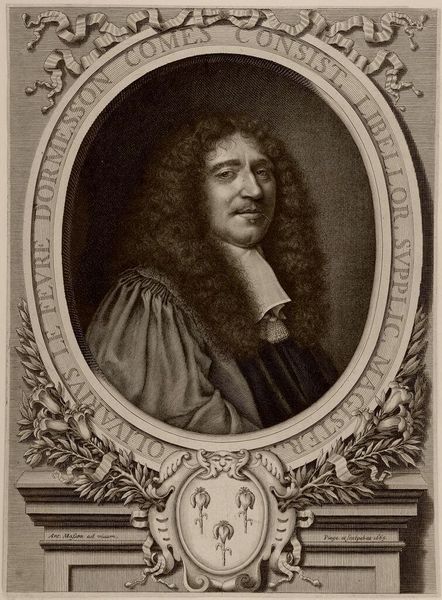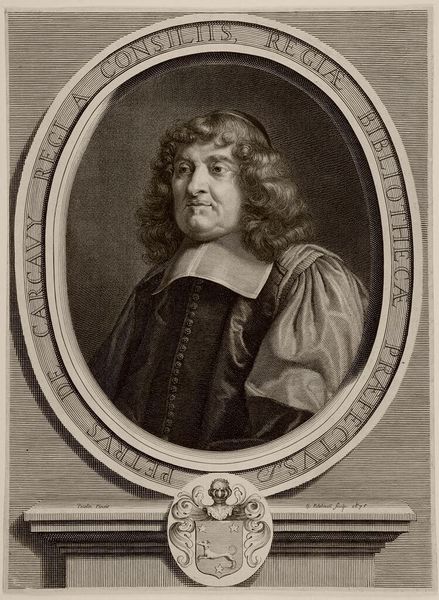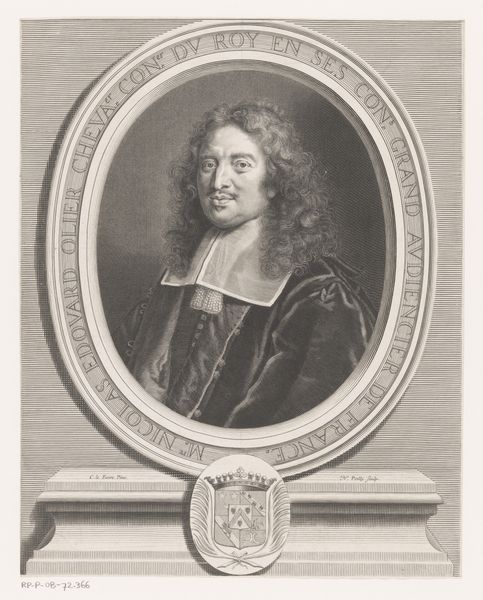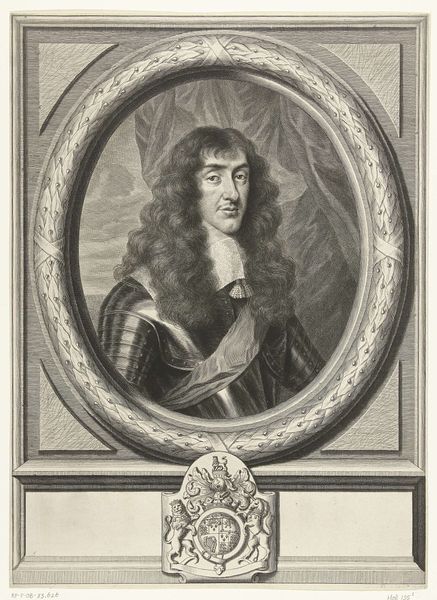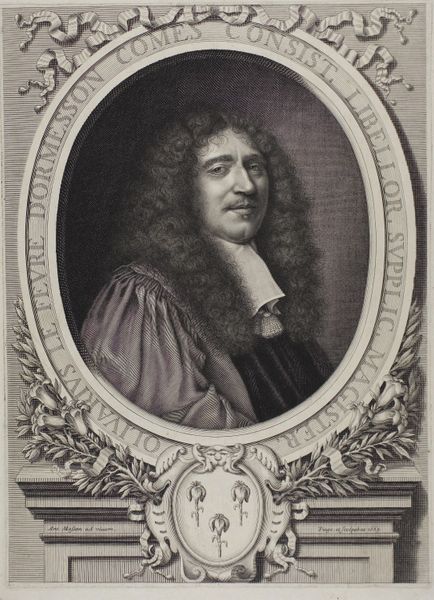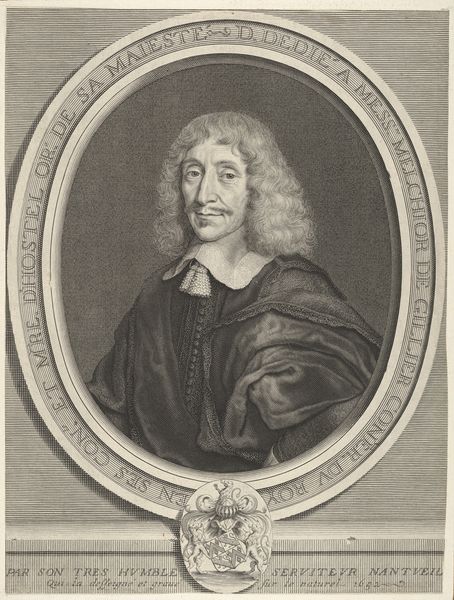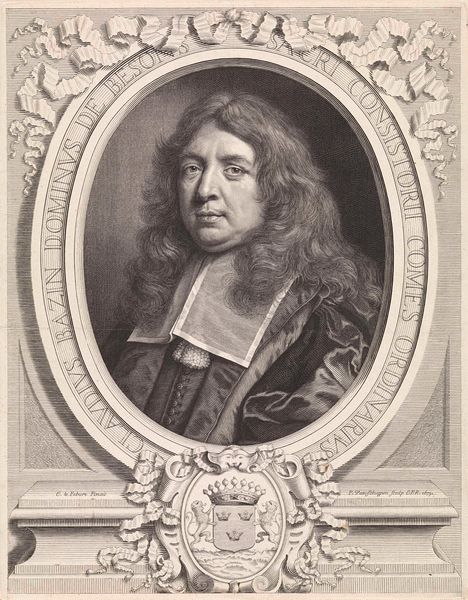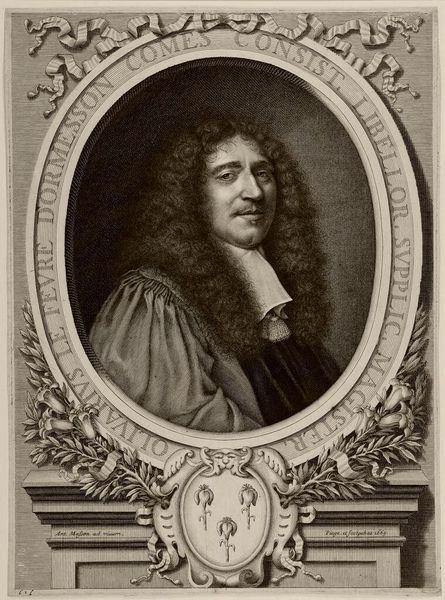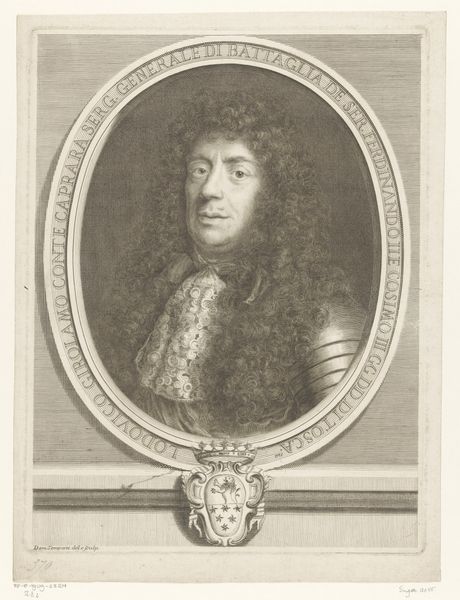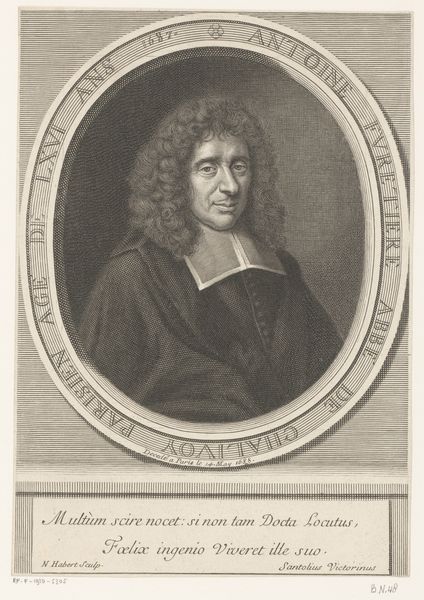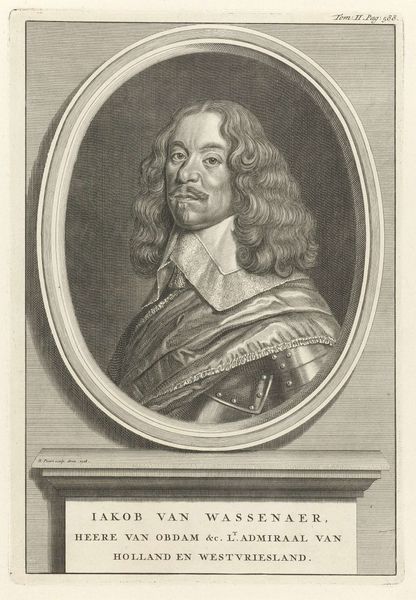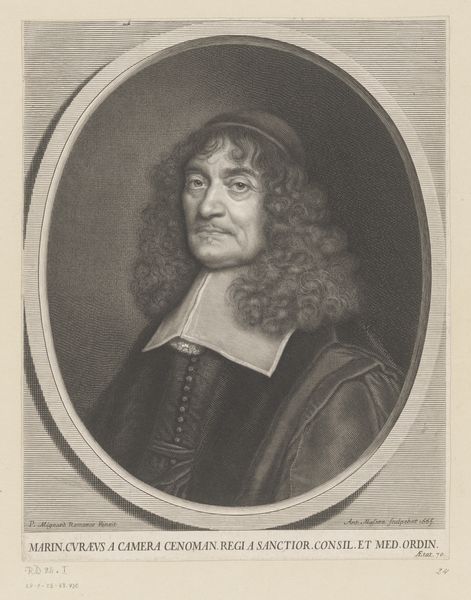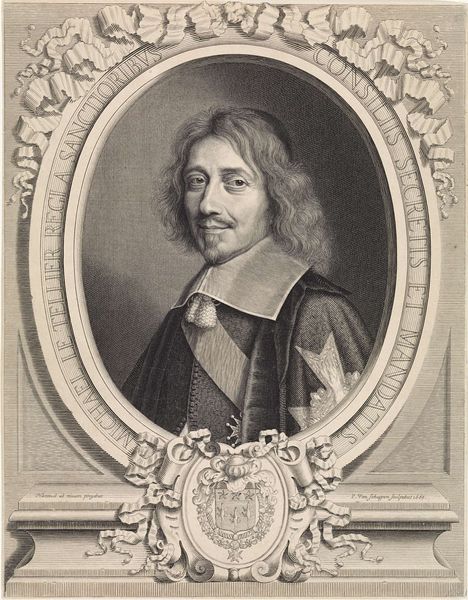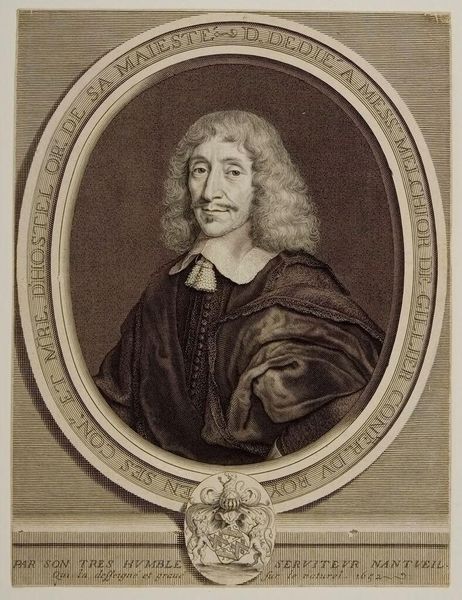
Portret van de priester Louis-Marie-Armand de Simianes de Gordes 1669
0:00
0:00
print, engraving
#
portrait
#
baroque
# print
#
historical photography
#
engraving
Dimensions: height 405 mm, width 353 mm
Copyright: Rijks Museum: Open Domain
Curator: This engraving from 1669, held here at the Rijksmuseum, is a portrait by Pieter van Schuppen. It depicts Louis-Marie-Armand de Simianes de Gordes. It is a fine example of Baroque portraiture. Editor: It is rather striking, isn't it? His gaze is so direct, so assured. There is such rich symbolism framed into this engraving that gives clues about his time. Even in monochrome, the details give a sense of depth and seriousness. Curator: The symbols you noticed were crucial in the historical and social representation. Take for instance the crest at the base of the oval frame and the emblem above. These served as powerful visual cues to the sitter's identity, lineage, and status. They root him within the rigid social hierarchy of the era. Editor: The meticulous detail paid to the garments, particularly the pristine white collar, is also of note. It conveys the purity expected from his religious office but can also be viewed as a statement of control, very carefully cultivated through symbolic props, hairstyle and of course his unyielding expression. Curator: Yes, we also cannot forget the social and political forces in play at that time in 17th-century Europe that dictated that public figures, especially those within the Church, presented themselves in such a manner to ensure societal control. Editor: Absolutely. I see a subtle confidence in the tilt of his head, the slight smirk. Does it hint at a potential duality between his earthly identity and spiritual vocation? His humanity seeps through all the signifiers of status. Curator: His perceived confidence also has to be considered through the Baroque aesthetic's appeal for grandeur and authority, especially within powerful institutions like the Church and state. Such formal portraits became essential propaganda tools, asserting power in a very controlled, public way. Editor: Indeed, considering these dualities and how images like this reflect societal ambitions and control, really lets us see more beneath the surface, even centuries later. Curator: A reflection well made on how art provides access to the understanding of past powers, Editor. Editor: An understanding as profound as any, thanks to visual clues like these.
Comments
No comments
Be the first to comment and join the conversation on the ultimate creative platform.
